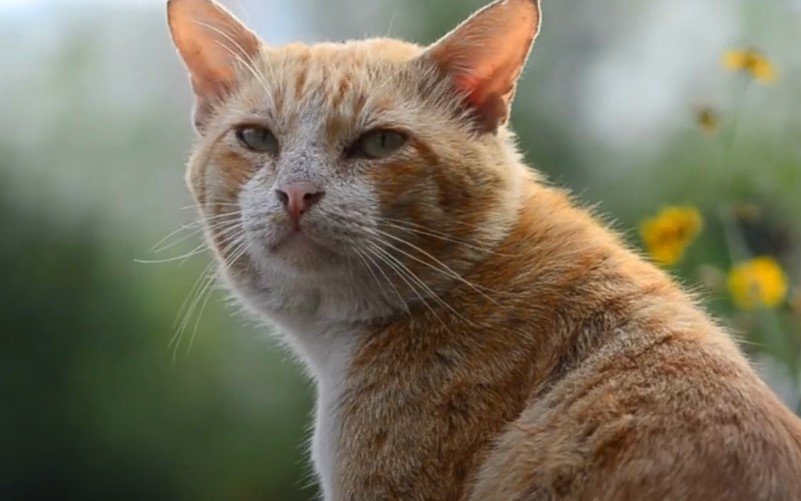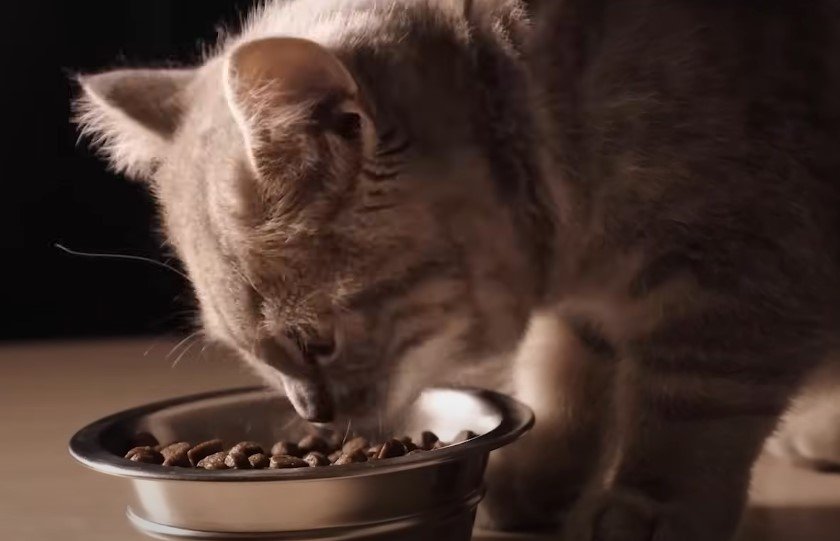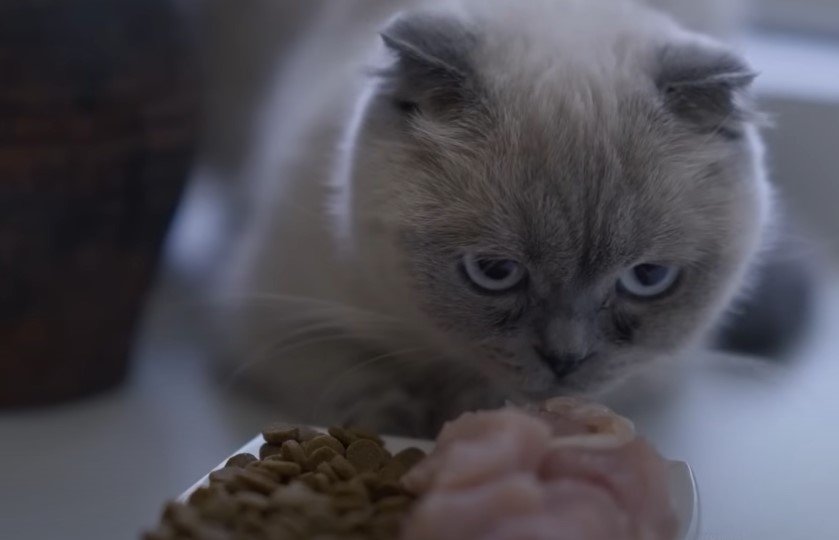
As a cat owner, you want to keep your furry friend safe and healthy. Wet cat food is a popular choice because it’s tasty, hydrating, and packed with nutrients. But have you ever wondered—can cats get food poisoning from wet food?
Yes, cats can get food poisoning from wet food if it becomes contaminated, spoiled, or improperly stored. Wet cat food spoils quickly because it has a lot of moisture, which makes it easy for harmful bacteria like Salmonella and Listeria to grow. Mold and toxins can also develop, leading to vomiting, diarrhea, and serious health issues.
Many pet owners don’t know that expired or improperly stored food is dangerous. Leaving food out too long can harm your cat. Keep reading, we’ll explore how wet food can make cats sick, signs to watch for, and how to prevent food poisoning to keep your cat safe.
What Is Food Poisoning in Cats?
Food poisoning in cats happens when they eat spoiled, contaminated, or toxic food. If wet food isn’t stored or handled properly, harmful bacteria like Salmonella, Listeria, E. coli, parasites such as Toxoplasma gondii, or toxins like Aflatoxins can grow. Eating contaminated food may cause mild stomach problems or lead to serious, life-threatening health issues.
Causes of Food Poisoning in Cats from Wet Food
Several factors can contribute to food poisoning in cats from wet food:
1. Bacterial Contamination
Wet food contains a lot of moisture. If left out at room temperature for more than 2 hours, it becomes a perfect place for bacteria like Salmonella, E. coli, and Listeria to grow. These harmful bacteria can make cats seriously ill.
Salmonella: This bacterium can be found in raw or undercooked meat. It can also contaminate wet cat food during preparation or if the food is left out too long. Eating salmonella can lead to salmonellosis, which has symptoms including vomiting, diarrhea, and tiredness.
Listeria: This bacterium grows in wet food that isn’t stored properly and can lead to listeriosis. Affected cats may have a fever, muscle aches, and stomach problems.
2. Mold & Toxins
Mold can grow on wet food stored in damp or humid conditions, producing mycotoxins that are harmful to cats. Eating moldy food can cause vomiting, tremors, or liver damage.
3. Improper Storage
If you don’t refrigerate wet cat food after opening it and don’t use it within 24-48 hours, it can spoil and grow bacteria and toxins.
4. Contaminated Ingredients
Poor-quality or expired ingredients may contain harmful bacteria, such as Salmonella or Listeria. Some commercial cat foods have even been recalled due to contamination.
5. Cross-Contamination
Using unclean bowls, spoons, or surfaces can transfer bacteria to fresh food. Always wash your cat’s dishes after every meal to prevent bacterial buildup.
6. Damaged or Expired Cans
Cans that are dented, swollen, or rusted might contain bacteria. Before feeding your cat, always check the expiration date and packaging.
Symptoms of Food Poisoning in Cats
It’s important to recognize the signs of food poisoning for quick action. Symptoms can vary based on the type of contaminant but commonly include:
1. Vomiting
One of the first signs of food poisoning. Your cat may vomit repeatedly, trying to expel harmful toxins.
2. Diarrhea
Loose, watery, or bloody stool is common. Diarrhea can lead to dehydration if not treated immediately.
3. Lethargy
A poisoned cat may seem weak, sleepy, or uninterested in usual activities. This happens because their body is fighting the illness.
4. Loss of Appetite
If your cat suddenly refuses to eat, it may be due to nausea or stomach pain from contaminated food.
5. Dehydration
Frequent vomiting and diarrhea cause fluid loss, making your cat dehydrated. Signs include dry gums, sunken eyes, and excessive thirst.
6. Fever
A fever can indicate an infection caused by bacteria in spoiled food. Your cat may feel warm to the touch or act sluggish.
7. Excessive Drooling
Some toxins in food can cause excessive salivation. If your cat is drooling a lot, it might be a reaction to poisoning.
8. Tremors or Seizures (Severe Cases)
In rare cases, toxic food can affect the nervous system, leading to shaking, tremors, or seizures. Seek emergency veterinary care if this happens.
How Vets Diagnose Food Poisoning in Cats
Vets use a step-by-step approach to confirm food poisoning and rule out other illnesses.
1. Physical Examination
- Check body temperature, hydration, and abdominal pain
- Look for weakness, vomiting, or diarrhea
They will also ask about your cat’s symptoms, recent meals, and exposure to spoiled food.
2. Medical History and Symptoms
The vet will ask questions like:
- When did the symptoms start?
- What type of food did your cat eat?
- Has your cat eaten anything unusual?
- Has your cat been vomiting or having diarrhea?
3. Lab Tests
- Blood test → Checks for infection, dehydration, and organ function. Detects toxic substances in the bloodstream
- Fecal test → Identifies bacteria, parasites, or toxins in stool samples
- Urinalysis → Evaluates kidney function and hydration levels
- Vomit analysis → If available, vomit samples can be tested for bacteria, toxins, or food contaminants
4. Imaging Tests (If Needed)
In some cases, the vet may do:
- X-rays or ultrasound to check for blockages, foreign objects, or intestinal damage
5. Response to Treatment
- If symptoms improve with supportive care, food poisoning is confirmed
Quick diagnosis = faster treatment = better recovery.

Treatment of Food Poisoning in Cats
If your cat is poisoning food, you must act quickly. The right treatment can help prevent serious complications and speed up recovery. Here’s what you need to do.
1. Identify the symptoms – First, watch for the symptoms of food poisoning. If your cat shows any signs of food poisoning, take quick action.
2. Remove the contaminated food – If it seems bad, throw it away. Check for a bad smell, mold, or strange texture. Wash the bowl with hot, soapy water to remove bacteria.
3. Keep your cat hydrated because food poisoning can lead to dangerous dehydration. Always provide fresh water. If your cat refuses water, try offering unsalted chicken broth, ice cubes to lick, or a vet-approved electrolyte solution. In severe cases, your cat may need fluids from a veterinarian.
4. Let Their Stomach Rest—Stop feeding your cat for 6 to 12 hours to give its stomach time to settle. After this, offer small amounts of bland foods like plain boiled chicken or rice, and avoid dairy, fats, and heavy foods.
5. If symptoms last more than 24 hours, seek veterinary care immediately.
Go to the vet right away if your cat:
- Keeps vomiting or has persistent diarrhea
- Shows signs of severe dehydration (dry gums, sunken eyes, no urination)
- Has tremors, seizures, or extreme weakness
6. A vet may:
- Give IV fluids to prevent dehydration
- Prescribe anti-nausea medication
- Administer antibiotics if a bacterial infection is present
- Run tests to check for toxins or infections
7. Monitor Recovery at Home – As your cat recovers, offer small, frequent meals of easily digestible food and ensure fresh water is always available. Monitor for any recurring symptoms and gradually reintroduce regular food over a few days.
How To Prevent Food Poisoning In Cats From Wet Food
Proper handling and storage of wet cat food are essential to prevent foodborne illnesses in cats. Start by selecting high-quality, trusted brands to ensure your feline companion’s safety. To keep your cat safe from food poisoning from wet food, follow these simple guidelines:
1. Store Wet Food Properly
- Store them in a cool, dry place, away from sunlight.
- Refrigerate opened food immediately and use leftovers within 2-3 days.
- Transfer unused food to an airtight container to keep it fresh.
2. Follow Feeding Guidelines
- Do not leave wet food out for more than 1-2 hours, especially in warm weather.
- Wash food and water bowls daily to prevent bacteria buildup.
- Serve only what your cat can eat in one sitting to avoid waste.
3. Watch Expiration Dates
- Always check expiration dates before feeding. Expired food can grow harmful bacteria and toxins.
- Avoid dented, swollen, or leaking cans—they may be contaminated.
4. Maintain Good Hygiene
- Remember to wash your hands before and after handling it.
- Keep food areas clean
5. Be Aware of Recalls
- Check pet food recalls from trusted sources like the FDA or pet food brands.
- Stop feeding recalled food immediately and contact your vet if your cat shows any signs of illness.
6. Monitor Your Cat’s Health
- Watch for symptoms like vomiting, diarrhea, or loss of appetite.
- If your cat shows any unusual symptoms, visit the vet quickly.

Pros and Cons of Wet Cat Food
Choosing the right food for your cat is important. Wet cat food is a popular option, but is it the best choice for your pet? Here are the pros and cons to help you choose.
| Pros | Cons |
| High Moisture Content – This keeps your cat hydrated and supports kidney health. | Spoils quickly – Can’t be left out for more than 1-2 hours. |
| Soft and Easy to Eat – Ideal for kittens, senior cats, and those with dental issues. | More Expensive – Costs more than dry food per serving. |
| High in Protein – Helps build muscles and promotes overall well-being. | Can Cause Dental Issues – Lacks crunch, which helps clean teeth. |
| More Appealing to Cats – The strong aroma and texture make it great for picky eaters. | Requires Refrigeration – Opened cans must be stored in the fridge and used within days. |
| Lower in Carbs – Helps prevent obesity and supports weight management. | Messy to Serve – This can leave leftovers in bowls and require extra cleaning. |
Final Thoughts
Wet cat food is great for hydration and taste, but it can be risky if not stored or handled properly. To keep your cat safe, follow proper food safety guides, stay updated on recalls, and watch for any signs of foodborne illness.
FAQ
1. How do I tell if my cat has food poisoning?
Watch for signs like vomiting, diarrhea, loss of appetite, drooling, weakness, or lethargy. Your cat may also show signs of dehydration or abdominal pain. If symptoms appear, contact your vet immediately for proper care.
2. How long can cat wet food be left out?
Don’t leave wet cat food out for more than 2 hours at room temperature. Bacteria multiply quickly, making the food unsafe. In warmer conditions (over 90°F), throw it away after 1 hour. Always refrigerate leftovers immediately and use them within 2-3 days to keep your cat safe from foodborne illnesses.
3. Is it safe to feed my cat raw food diets?
Raw diets can carry harmful bacteria like Salmonella and E. coli and may lack essential nutrients, which can cause serious illness. For safety, experts recommend high-quality commercial or homemade meals. Always consult your vet before changing your cat’s diet.
4. Is it bad to give cats wet food every day?
No, it’s not bad to feed cats wet food every day. It’s beneficial because wet food keeps cats hydrated, supports kidney health, and provides essential nutrients. Choose high-quality wet food, follow proper portion sizes, and store food correctly to prevent spoilage.
5. Can I mix wet and dry cat food?
Yes, you can mix wet and dry cat food. It provides balanced nutrition, improves hydration, and adds variety to your cat’s diet. Wet food increases hydration, while dry food supports dental health. Gradually introduce the mix to avoid digestive issues.
6. How to Store Opened Wet Cat Food Properly?
Store leftover wet cat food in an airtight container and refrigerate immediately at 40°F (4°C) or below. Use within 2-3 days and never leave it out for more than 2 hours (1 hour in warm weather). Always check for spoilage before serving—if it smells bad or looks off, throw it away.

